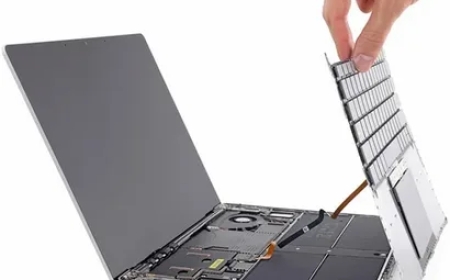What Are Painters Tarps and How Do They Protect Your Space?
Discover what painters tarps are and how they protect your space during home projects. Learn about materials, features, sizes, and expert tips for proper use, safety, and reusability.

When taking on a painting projectwhether at home, in a commercial space, or on an industrial siteone of the most overlooked yet essential tools is a high-quality tarp. Painters tarps serve as a reliable barrier that shields surfaces, furniture, and floors from paint spills, dust, and debris. Designed for durability and reusability, they are indispensable for both professionals and DIY enthusiasts who want to protect their work area and maintain a clean environment.
Understanding the purpose, types, and correct usage of painters tarps ensures better project outcomes, reduces cleanup time, and prevents costly damage to floors, carpets, and furniture.
The Role of Painters Tarps in Surface Protection
Painters tarps act as protective layers placed over items and surfaces that are not meant to be painted. Whether you're working on walls, ceilings, or cabinetry, paint splatter and drips are nearly inevitable. Tarps catch those unintended messes, preventing them from staining or damaging the area.
Key Protective Benefits:
-
Shield floors, carpets, and tiles from paint spills
-
Cover furniture and appliances from overspray or sanding dust
-
Protect windows and doors from accidental paint contact
-
Act as a barrier during sanding, scraping, or cleaning prep work
A well-placed tarp can make the difference between a quick, efficient cleanup and hours spent scrubbing paint off surfaces.
Different Materials Used in Painters Tarps
Not all tarps are created equal. The material used affects their durability, absorbency, slip-resistance, and suitability for indoor or outdoor use. Choosing the right type depends on your project environment and goals.
Common Materials:
-
Canvas: Highly durable, absorbent, reusable; excellent for indoor painting
-
Plastic (polyethylene): Waterproof and lightweight; ideal for covering furniture
-
Paper-backed plastic: Prevents seepage; suitable for quick disposable coverage
-
Butyl-coated tarps: Offers waterproofing and non-slip backing; perfect for high-traffic areas
Each material has unique properties suited for specific applications, and using the wrong one may lead to damage or inefficient protection.
Key Features to Look for in High-Quality Painters Tarps
Investing in a high-quality tarp ensures better protection and longevity. Rather than opting for the cheapest option, look for tarps designed for performance and practicality.
Must-Have Features:
-
Heavy-duty weave for long-term use and tear resistance
-
Non-slip backing to prevent accidents on slick surfaces
-
Double-stitched edges for durability
-
Absorbent top layer to soak up spills without letting paint seep through
-
Washable and reusable properties to reduce waste
Good tarps arent just disposable coverstheyre tools built to withstand the rigors of frequent use.
How to Choose the Right Size and Thickness for Your Project
The size and thickness of your painter's tarp should align with the scope of your project. Too small, and it wont cover essential areas. Too thin, and it may rip or allow paint seepage.
Selection Tips:
-
For room-sized projects, choose large tarps that cover entire floor areas
-
For furniture protection, opt for medium-sized plastic or poly tarps
-
For window or door masking, use lightweight plastic sheeting
-
For professional use, consider thicker canvas tarps (10 oz. or higher)
Thickness is particularly important when working on uneven surfaces or using ladders, as flimsy tarps can shift or tear underfoot.
Proper Placement and Securing of Tarps
Correct placement and securing of tarps is essential to maximize protection and safety. Loose or poorly arranged tarps can become tripping hazards or let paint seep through unprotected areas.
Best Practices:
-
Secure corners with painters tape or masking tape
-
Use weights or clamps on edges to hold tarp in place
-
Overlap tarps if more than one is used to avoid gaps
-
Avoid dragging tarps to prevent tearing or shifting
-
Ensure the surface beneath is clean to allow grip and reduce sliding
Following these steps ensures complete coverage and reduces the risk of costly damage.
Reusability and Maintenance of Canvas Tarps
Canvas tarps are a favorite among professional painters due to their long-lasting nature and easy maintenance. With proper care, a single tarp can last through multiple projects.
How to Maintain:
-
Shake off excess dust and dried paint flakes after each use
-
Machine wash on gentle cycle (if the material allows)
-
Air dry to preserve fabric integrity
-
Fold and store in a dry, clean area
-
Avoid storing when damp to prevent mold and mildew
Proper maintenance not only saves money but also ensures optimal protection for every job.
Why Tarps Are Better Than Newspapers or Bedsheets
While it may be tempting to use old newspapers or bedsheets as makeshift tarps, they fall short in providing true protection. These alternatives can allow paint to bleed through, rip easily, or slip underfootcreating safety hazards.
Comparison at a Glance:
| Feature | Painters Tarps | Bedsheets | Newspapers |
|---|---|---|---|
| Absorbent | ?? | ? | ? |
| Tear-resistant | ?? | ? | ? |
| Reusable | ?? | ? | ? |
| Slip protection | ?? | ? | ? |
| Waterproof options | ?? | ? | ? |
Choosing a professional-grade tarp ensures you are fully protected, not just improvising with materials that arent up to the task.
How Painters Tarps Help with Non-Painting Tasks
Painters tarps are also versatile tools that extend beyond painting projects. They offer protection for many home renovation or maintenance tasks that generate dust, debris, or liquid mess.
Additional Use Cases:
-
Floor protection during furniture moving or renovations
-
Dust barrier during drywall sanding or demolition
-
Catch-all cover when working on plumbing or electrical repairs
-
Temporary weatherproofing during roof or window repair
-
Cover for garden tools or outdoor equipment
Tarps are multifunctional items that belong in any well-stocked toolbox or workshop.
Environmental Impact of Reusable Tarps
In todays eco-conscious world, reusable painters tarps present a more sustainable solution compared to disposable plastic sheeting. They reduce landfill waste and help lower your projects environmental footprint.
Eco-Friendly Advantages:
-
Canvas tarps can be used hundreds of times with proper care
-
Reduces reliance on single-use plastic products
-
Biodegradable options are available in natural fibers
-
Helps promote responsible home improvement practices
Making smart choices in your project supplies supports both your space and the planet.



































